WELLINGTON, New Zealand — An undersea volcano erupted in spectacular fashion Saturday near the Pacific nation of Tonga, sending tsunami waves crashing across the shore and people rushing to higher ground.
The eruption cut the internet to Tonga, leaving friends and family members around the world on Sunday still anxiously trying to get in touch to figure out if there were any injuries and the extent of the damage. Even government websites and other official sources remained without any updates.
Satellite images showed a huge eruption, with a plume of ash, steam and gas rising like a mushroom above the blue Pacific waters. A sonic boom could be heard as far away as Alaska.
Tsunami advisories were issued for Hawai‘i, Alaska and the U.S. Pacific coast. The U.S. Geological Survey estimated the eruption caused the equivalent of magnitude 5.8 earthquake. Scientists said tsunamis generated by volcanoes rather than earthquakes are relatively rare.
Although no major tsunami was expected to strike Hawai‘i, the water displaced by the volcanic activity caused unusual sea-level changes and alterations to typical sea currents starting at about 1:05 a.m. Saturday, stated a Hawai‘i Emergency Management Agency tsunami advisory.
Surges caused minor damage on Kaua‘i.
The Tonga Meteorological Services said a tsunami warning was declared for all of the archipelago, and data from the Pacific Tsunami Warning Center said waves of 80 centimeters (2.7 feet) were detected.
Rachel Afeaki-Taumoepeau, who chairs the New Zealand Tonga Business Council, said she hoped the relatively low level of the tsunami waves would have allowed most people to get to safety, although she worried about those living on islands closest to the volcano. She said she hadn’t yet been able to contact her friends and family in Tonga.
“We are praying that the damage is just to infrastructure and people were able to get to higher land,” she said.
Tonga gets its internet via an undersea cable from Suva, Fiji, which presumably was damaged. All internet connectivity with Tonga was lost at about 6:40 p.m. local time, said Doug Madory, director of internet analysis for the network intelligence firm Kentik.
Southern Cross Cable Network, the company that manages the connection, does not know yet “if the cable is cut or just suffering power loss,” chief technical officer Dean Veverka said.
The Fiji-based Islands Business news site reported that a convoy of police and military troops evacuated Tonga’s King Tupou VI from his palace near the shore. He was among the many residents who headed for higher ground.
On Tonga, home to about 105,000 people, video posted to social media showed large waves washing ashore in coastal areas, swirling around homes, a church and other buildings.
New Zealand’s military said it was monitoring the situation and remained on standby, ready to assist if asked.
In Hawai‘i, the Pacific Tsunami Warning Center reported waves that measured 1.6 feet in Nawiliwili 2.7 feet in Hanalei. The National Weather Service said there were reports of boats getting pushed up in docks, but the hazard diminished as the morning went on.
*”I got the call from the watch around 2:30 a.m.,” said Chief Tim Elhajj of U.S. Coast Guard Station Kaua‘i. “He said, ‘the station is under water’ from the surge estimated at 1.5 feet. The surge was compounded by the full moon high tide that took place at the same time the surge came in. There was water over the piers, and on the outside water as high as the tires on the government vehicles.”
The water also moved the station’s dumpster to where it blocked several of the parking spaces.
“We are relieved that there is no reported damage and only minor flooding throughout the islands,” the tsunami center said, describing the situation in Hawai‘i. The tsunami advisory for the islands was lifted about 11 hours after the eruption more than 3,000 miles away.
Chris Jordan, owner and skipper of the 30-foot sailing boat OZone, said there was water everywhere at the Nawiliwili Yacht Club and Kaua‘i Sailing Association building in Nawiliwili Small Boat Harbor.
“I cleaned up quite a bit,” Jordan said. “But we made a mark on how high the water rose during the 2011 tsunami. Compared to that, the debris line is pretty close. The water floated the aquarium, floated out the lumber we had in storage and moved the boats around.
Another Chris, spending the night with his companion and two children aboard a boat berthed at the Nawiliwili Small Boat Harbor, said the water woke him up.
“The boat was at an angle,” he said. “When I went outside, the water was nearly waist deep. The electrical recepticles were all underwater, and it was at the base of the lampholders. This continued every 20 minutes for a while.”
Outfitters Kaua‘i lost its dock, and a boat that was found floating upside down in the brown Hule‘ia River and Nawiliwili Harbor water, noting the water came as high as their office located on the opposite side of the harbor entrance road adjacent to the Young Brothers shipping yard.
In Tonga, a Twitter user identified as Dr. Faka’iloatonga Taumoefolau posted video showing waves crashing ashore.
“Can literally hear the volcano eruption, sounds pretty violent,” he wrote, adding in a later post: “Raining ash and tiny pebbles, darkness blanketing the sky.”
The explosion of the Hunga Tonga Hunga Ha’apai volcano was the latest in a series of dramatic eruptions.
Earth-imaging company Planet Labs PBC had watched the island in recent days after a new volcanic vent there began erupting in late December.
Satellite images captured by the company show how drastically the volcano had shaped the area, creating a growing island off Tonga.
“The surface area of the island appears to have expanded by nearly 45% due to ashfall,” Planet Labs said days before the latest activity.
Following Saturday’s eruption, residents in Hawai‘i, Alaska and along the U.S. Pacific Coast were advised to move away from the coastline to higher ground and to pay attention to specific instructions from their local emergency management officials, said Dave Snider, tsunami warning coordinator for the National Tsunami Warning Center in Palmer, Alaska.
“We don’t issue an advisory for this length of coastline as we’ve done — I’m not sure when the last time was — but it really isn’t an everyday experience,” Snider said.
He said the waves slamming ashore in Hawai‘i were just under the criteria for a more-serious tsunami warning.
“It looks like everything will stay below the warning level, but it’s difficult to predict because this is a volcanic eruption, and we’re set up to measure earthquake or seismic-driven sea waves,” Snider said.
The first waves to hit the continental United States measured about 1 foot in Nikolski, Alaska, and 1.9 feet in Adak, Alaska. A wave of about 2.6 feet was observed in Monterey, California, according to the U.S. National Tsunami Warning Center.
On California’s central coast, the National Weather Service reported tsunami waves up to 4 feet and flooding in beach parking lots at Port San Luis.
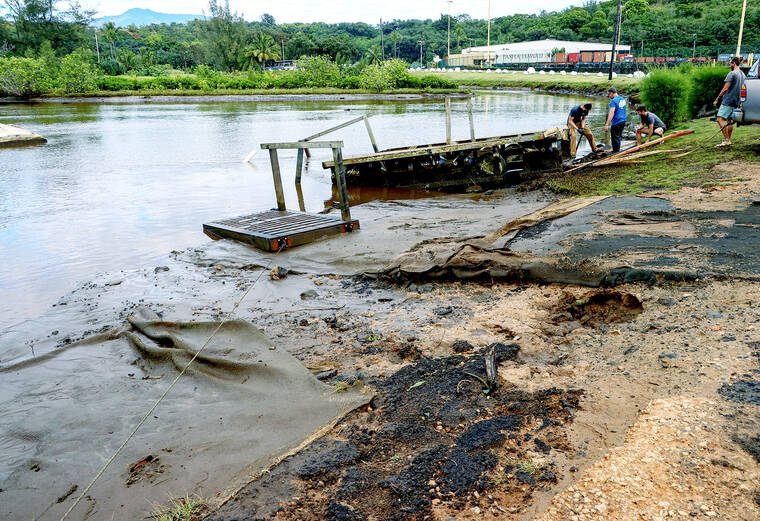
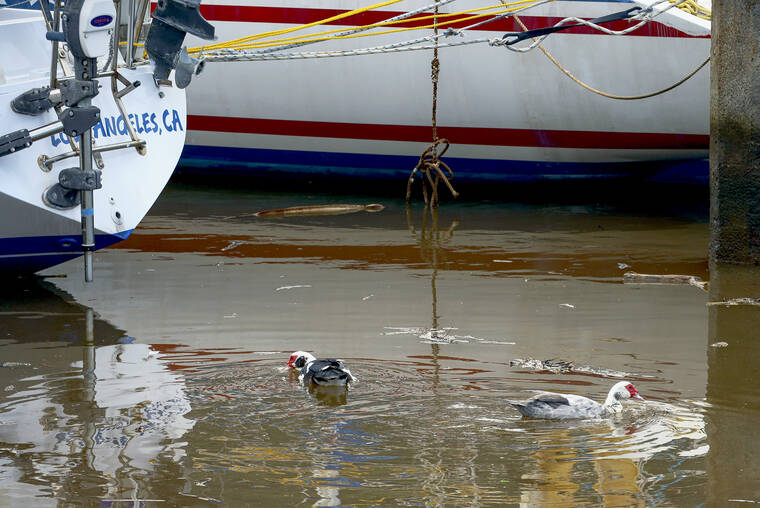
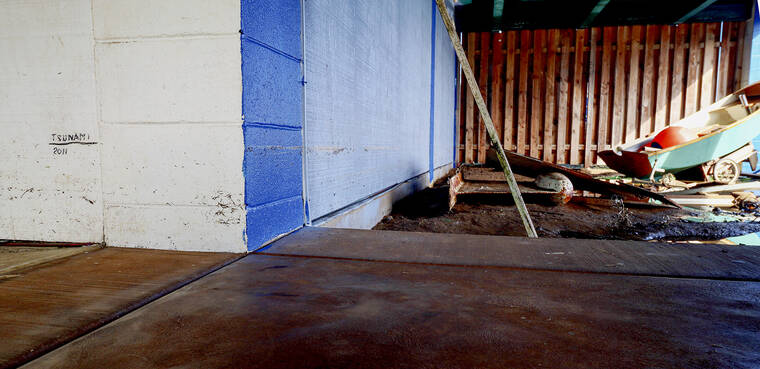
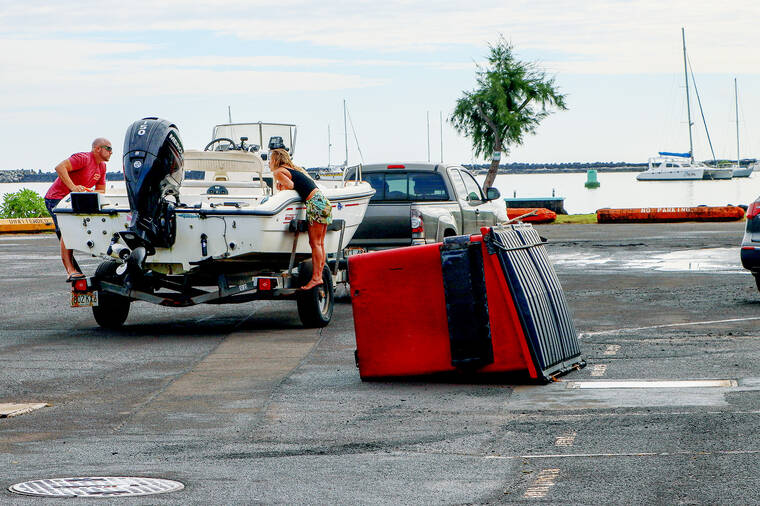
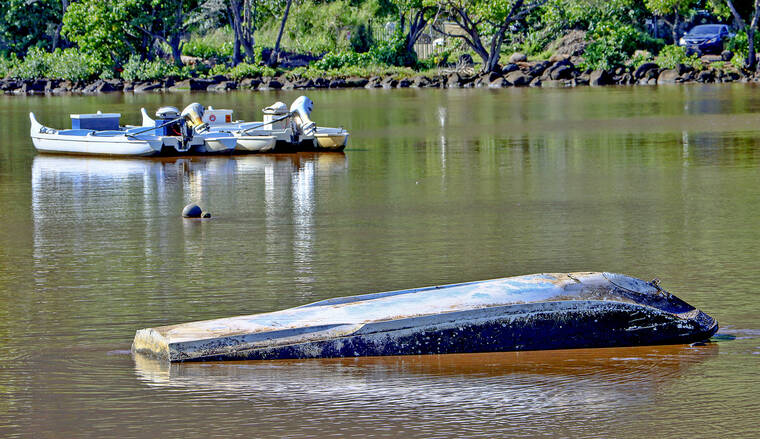
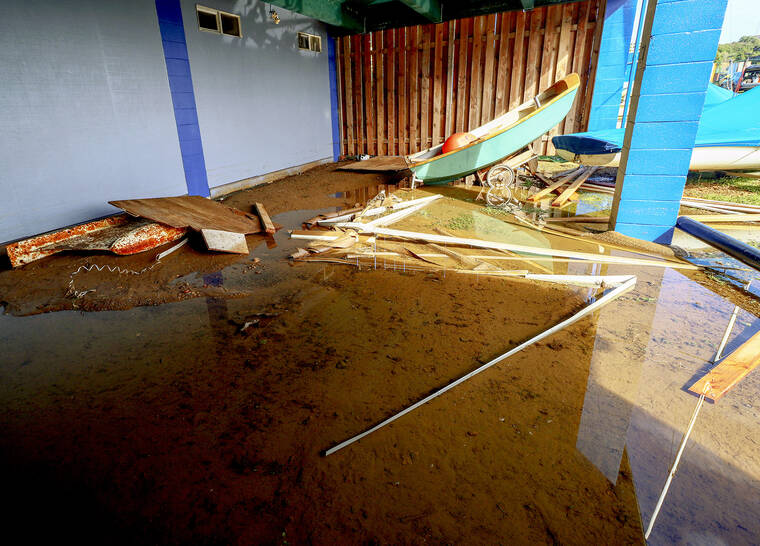
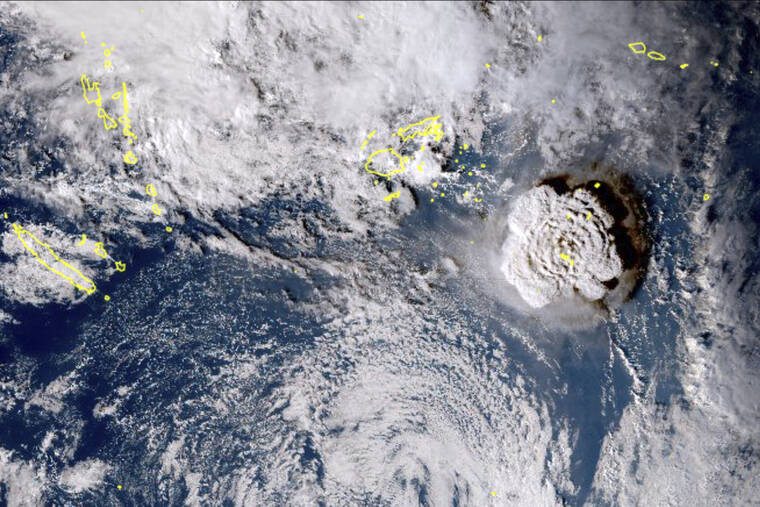

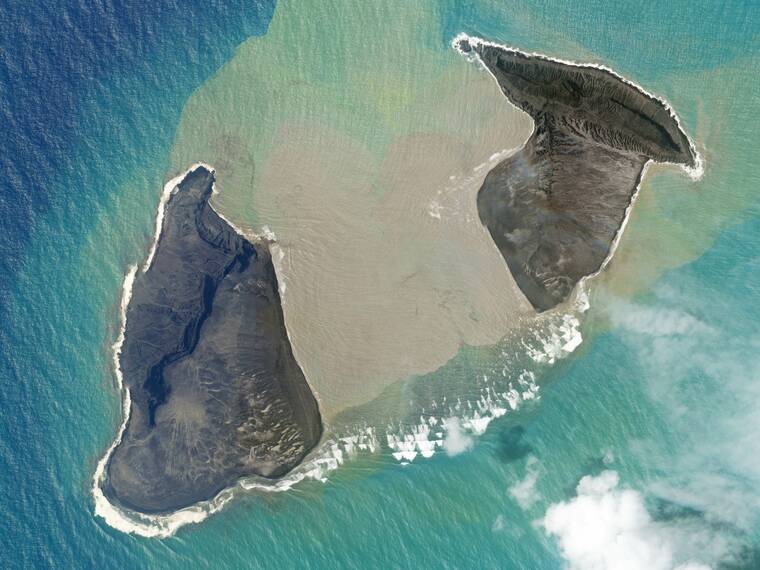






I don’t know about the rest of you but I didn’t hear any tsunami warnings.
And I know of witnesses that said nawiliwili had a surge.